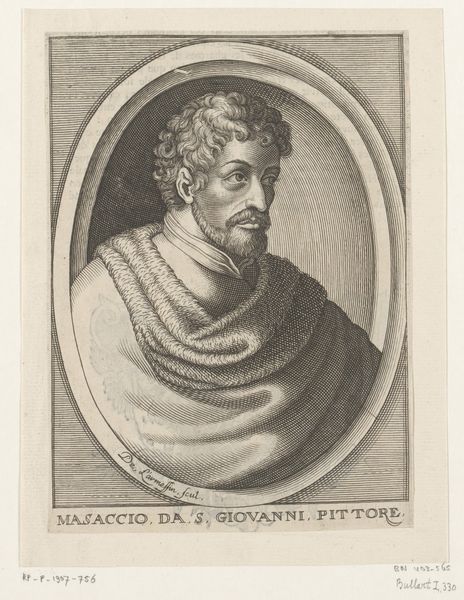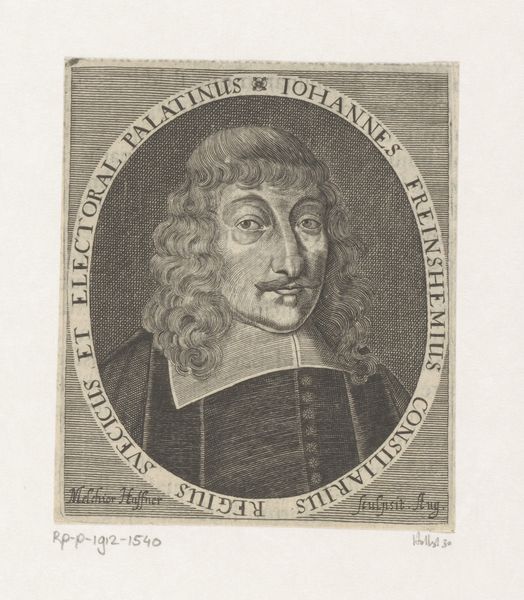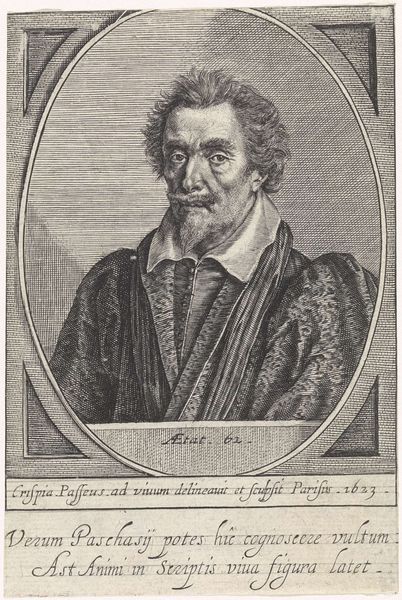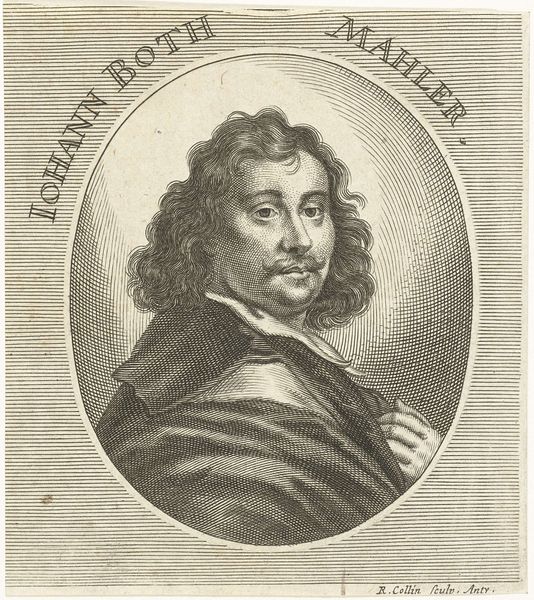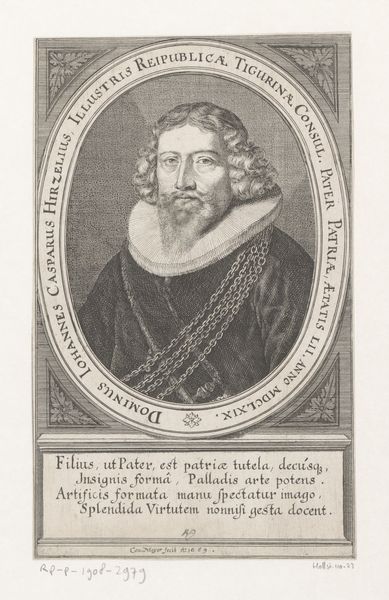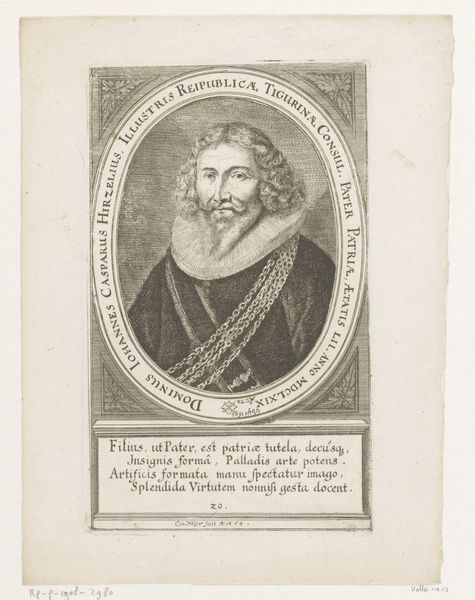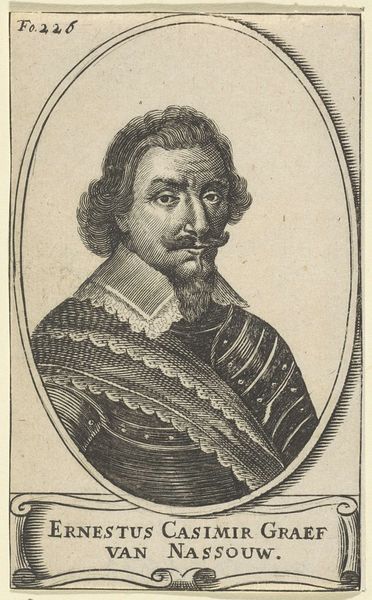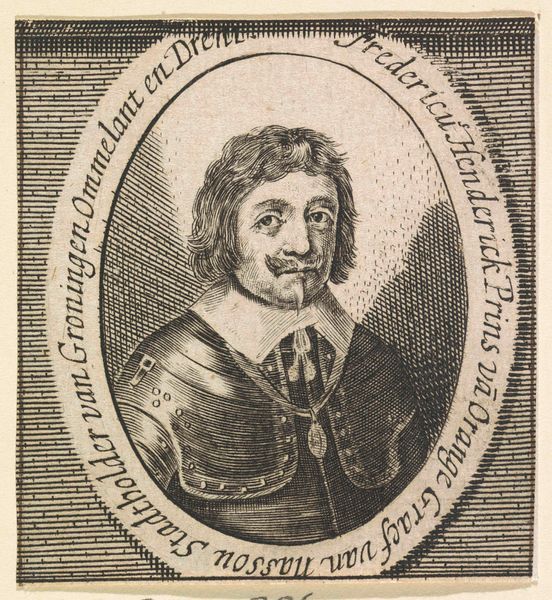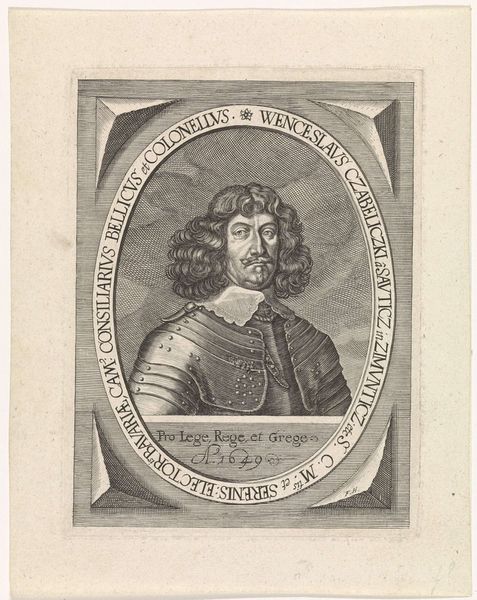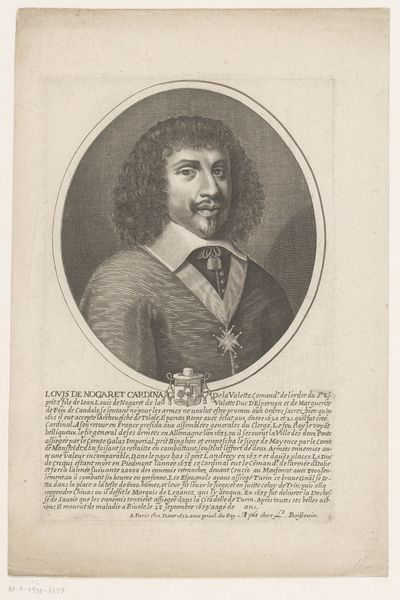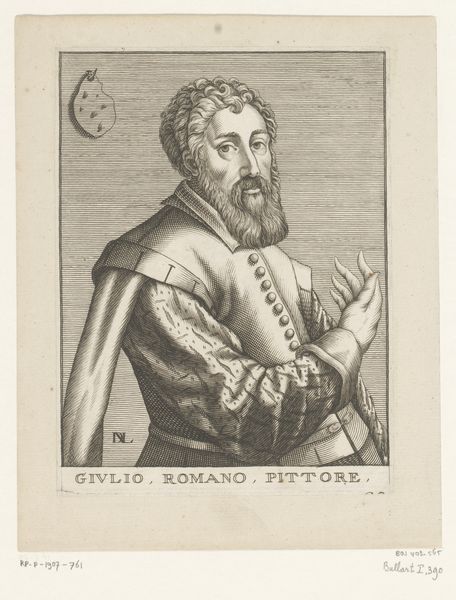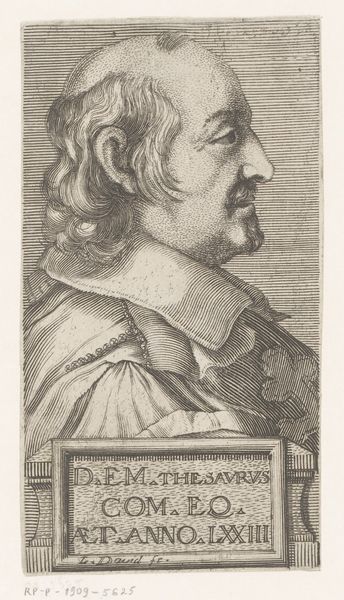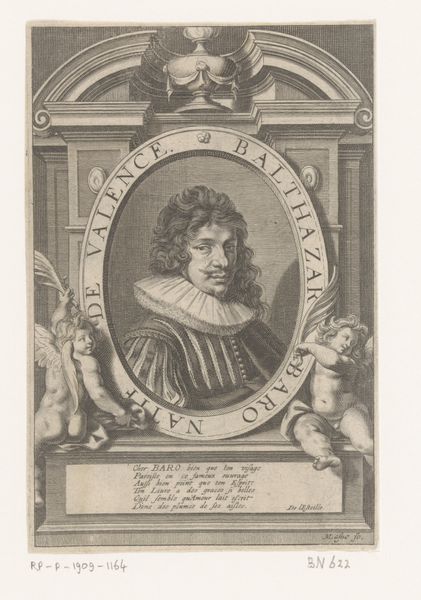
drawing, engraving
portrait
drawing
11_renaissance
italian-renaissance
engraving
Dimensions: height 213 mm, width 164 mm
Copyright: Rijks Museum: Open Domain
Curator: Here we have Jean Baron’s rendering of “Portrait of Franciabigio,” likely completed between 1641 and 1741. It's an engraving, part of a tradition of reproducing and disseminating artistic images. What’s your take? Editor: My immediate response is defiance. Look at the tilt of his head, the direct stare. It feels confrontational. Curator: Well, Franciabigio was a Florentine painter in the High Renaissance, known for his contributions to frescoes. This engraving attempts to capture that image for a later audience. It certainly highlights his individual character, something that was being promoted by the art market and portraiture during the Renaissance. Editor: Yes, and that individuality, how is it constructed? He's labeled a "painter of Florence," tying his identity directly to his profession and city. It speaks to the rising status of artists and the patronage systems that supported them, also about what being ‘Florentine’ means at that time, or at least means to the artist or person commissioning it. Curator: Exactly. Reproductions like this served a crucial role. They were collected in albums, used for study, circulated among artists and connoisseurs... it's all about expanding the reach of Franciabigio's image and, in some ways, cementing his place in art history. Editor: I find the artist’s interpretation so compelling, Baron has given us much to ponder. Did he intend defiance or is it projection from our standpoint as the observer? The work speaks to power and placement both literally and metaphorically of the individual inside this societal portrait. Curator: I agree; It's that tension that makes these historical images continually relevant. This engraving encapsulates the socio-cultural dynamics of both the Renaissance, which he embodies, and the later period when this print was created. Editor: Absolutely, considering what came before, what existed contemporaneously, and the after-effects can provide new pathways to how we understand not only art and culture, but ourselves as the recipients. Curator: And by creating accessibility we help connect history and the present day together. Editor: Indeed!
Comments
No comments
Be the first to comment and join the conversation on the ultimate creative platform.
